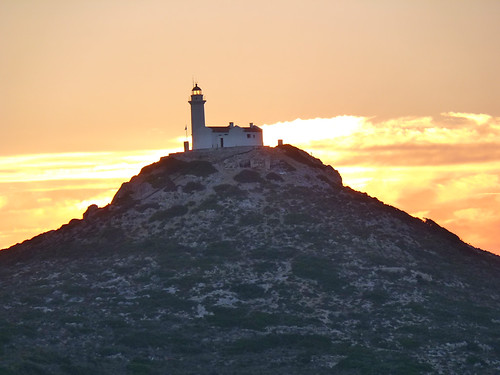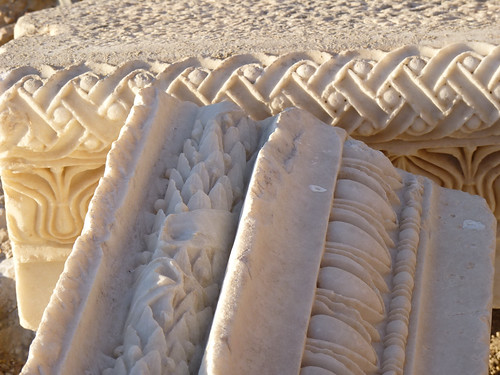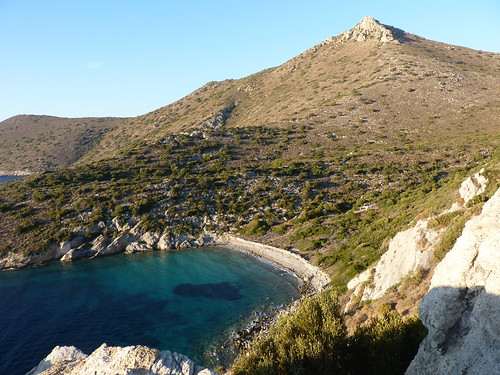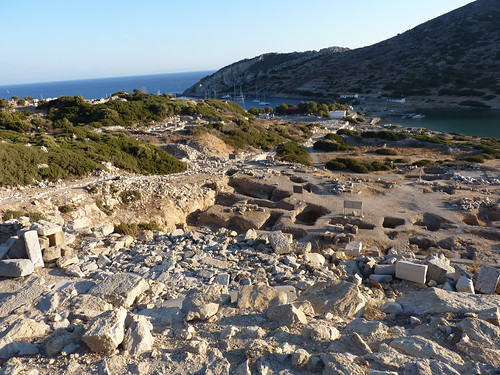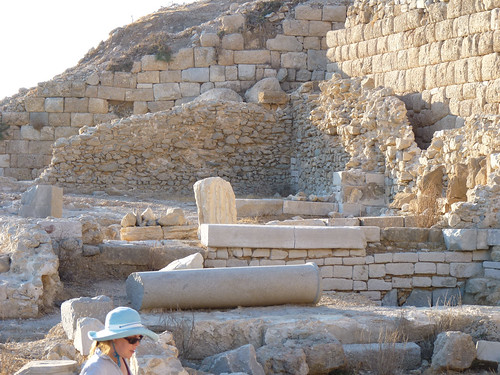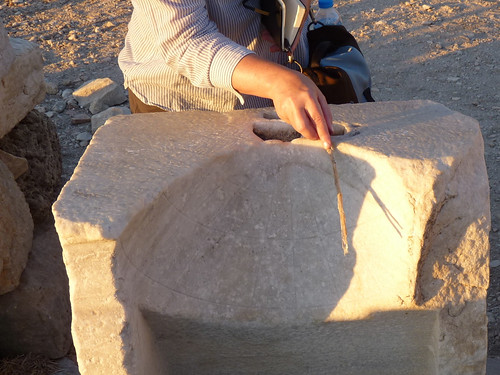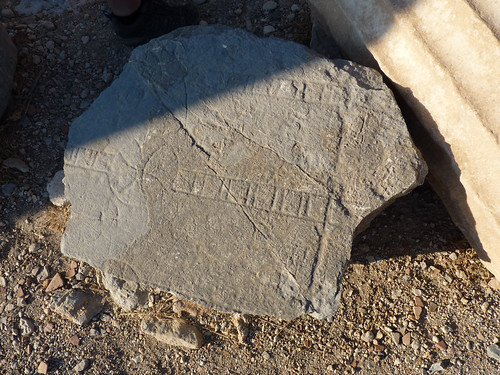Knidos is a fascinating ruin on the Turkish coast. From an archeological perspective, this ancient settlement really was the highlight of our entire gulet tour. There was so much to see at Knidos: Hellenistic, Roman, and Byzantine findings in remarkable condition, with no modern buildings competing for our attention. The city itself–which is perhaps less than 10% excavated–sits on an isthmus between two harbors.
Below, one of the huge theaters dedicated to Dionysus, overlooking the commercial harbor.
I said there were no modern buildings, but we did glimpse a pretty lighthouse on the other side of the isthmus, overlooking the military harbor.
Near the commercial harbor, we found a huge agora with a colonnade, now being restored.
Look at these marble carvings! Thousands of years old, and the egg-and-dart designs are still knife sharp.
A secret pool just beyond the military harbor.
There was all kinds of excavation going on, and the archeologists were laying out huge columns and other stones in rows, sorting them like giant LEGOs.
Here we are in the ruins of a temple to Apollo. Above my head, in the center of the temple, you can just see the remains of the statue of the god.
Knidos is famous for a life-sized statue of Aphrodite, widely copied and now lost. Apparently, the people on the nearby island of Kos had the opportunity to buy the nude Aphrodite and rejected the statue, scandalized. They bought the fully clothed version that Praxiteles made instead. So it was the Knidians who bought the nude likeness of the goddess and made it famous.
Not everything at Knidos was Hellenistic. We also found a fabulous Roman sundial. It had twelve panels, one for each hour of daylight. Which means, of course, that for the Romans, the hours of daylight were shorter in the winter than in the summer.
Even better than the sundial, we found a stone etched with carvings for playing Tavli (backgammon). I love the idea that real people were using these stones hundreds or even thousands of years ago, passing the hours by playing board games.

